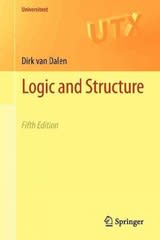Question
Soon after he took office in 1963, President Lyndon Johnson was approved by 160 out of a sample of 200 Americans. With growing dissatisfaction over
Soon after he took office in 1963, President Lyndon Johnson was approved by 160 out of a sample of 200 Americans. With growing dissatisfaction over his Vietnam policy, by 1968 he was approved by only 70 of 200 Americans.
Q1 )Find the 95% confidence interval for the percentage of all Americans who approved of Johnson in 1963.
Group of answer choices
1963(0.745,0.855)
1963(0.8,0.35)
1963(0.35,0.855)
No answer provided
Q2) What is the 95% confidence interval for the change in approval?
Group of answer choices
[0.364, 0.536]
[0.234,0.453]
[0.745,0.855]
[0.223,0.789]
Q3) The evidence supports that the approval rate is decreased.
Group of answer choices
True
False
Q4) At a large university, independent random samples of in-state and out-of-state students yield the following summary statistics for GPA:In-stateOut-of-stateX=2.6X=2.9s=0.5s=0.3n=8n=11
Construct a 95% confidence interval for the difference in population means, assuming that the population variances are equal.
Group of answer choices
12(0.3,0.1)
12(0.40.2)
12(0.7,0.1)
12(-0.7,0.1)
Q5)It can be concluded that on average out-of-state students have higher GPA than in-state students
True
False
Q6)As a development economist, you are interested in whether individuals in country A have a lower mean income than those in country B. You have available independent random samples of size 50 each from the two populations. In these samples,
XA=$500sA=$200XB=$600sB=$300
Assuming the population variances are equal, find the p-value and test the hypotheses
H0:BA=0
HA:BA>0
Q7)The pooled variance estimate sp2 calculated from this data is
Group of answer choices
35,000
55,000
65,000
45,000
Q8) What is the p-value?
Group of answer choices
0.04
0.05
0.026
0.01
Q9) What does p-value tell you about the test?
Group of answer choices
I would reject the null hypothesis of equality of means at any level greater than the p-value .
I would reject the null hypothesis of equality of means at any level less than the p-value .
Based on the data, the probability of the mean income of the two countries to be the same is the less than the p-value.
Based on the data, the probability of the mean income of the two countries to be the same is the greater than the p-value.
Step by Step Solution
There are 3 Steps involved in it
Step: 1

Get Instant Access to Expert-Tailored Solutions
See step-by-step solutions with expert insights and AI powered tools for academic success
Step: 2

Step: 3

Ace Your Homework with AI
Get the answers you need in no time with our AI-driven, step-by-step assistance
Get Started


